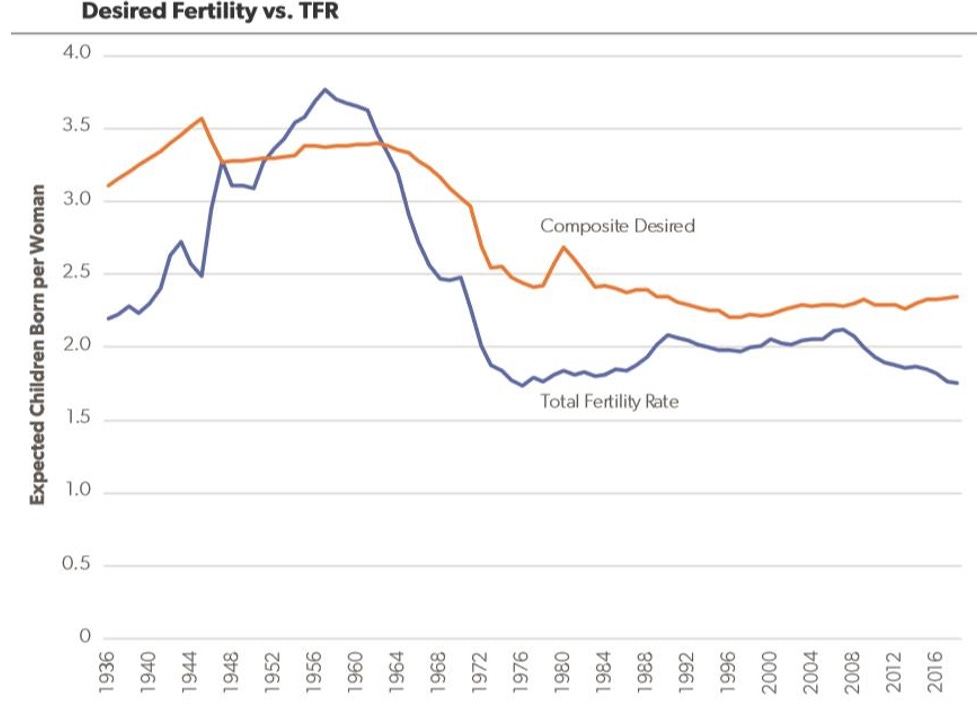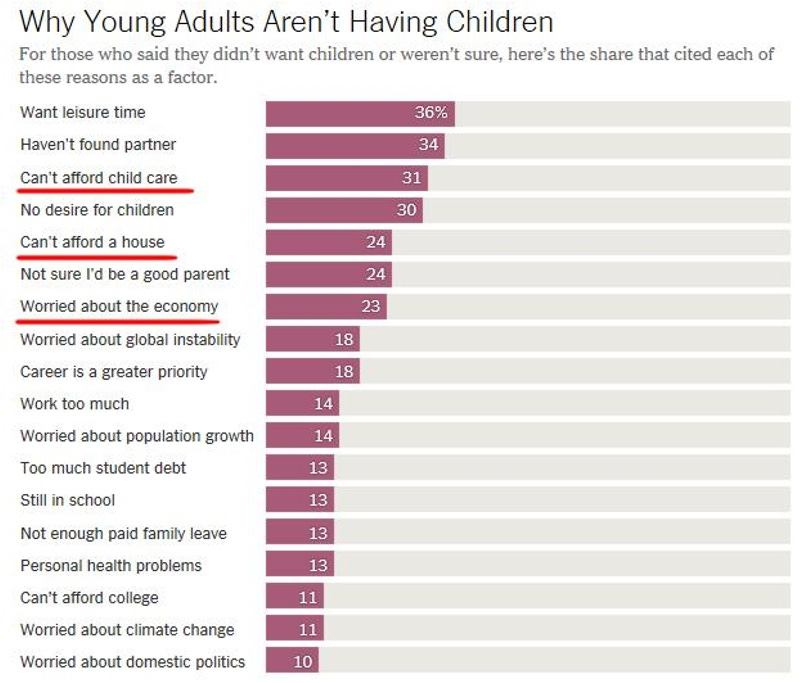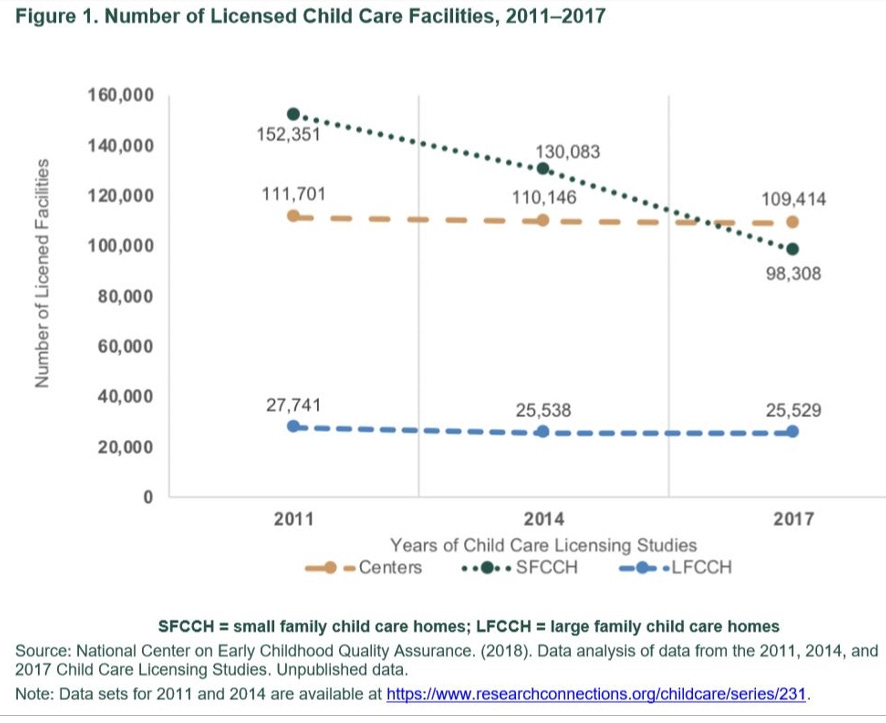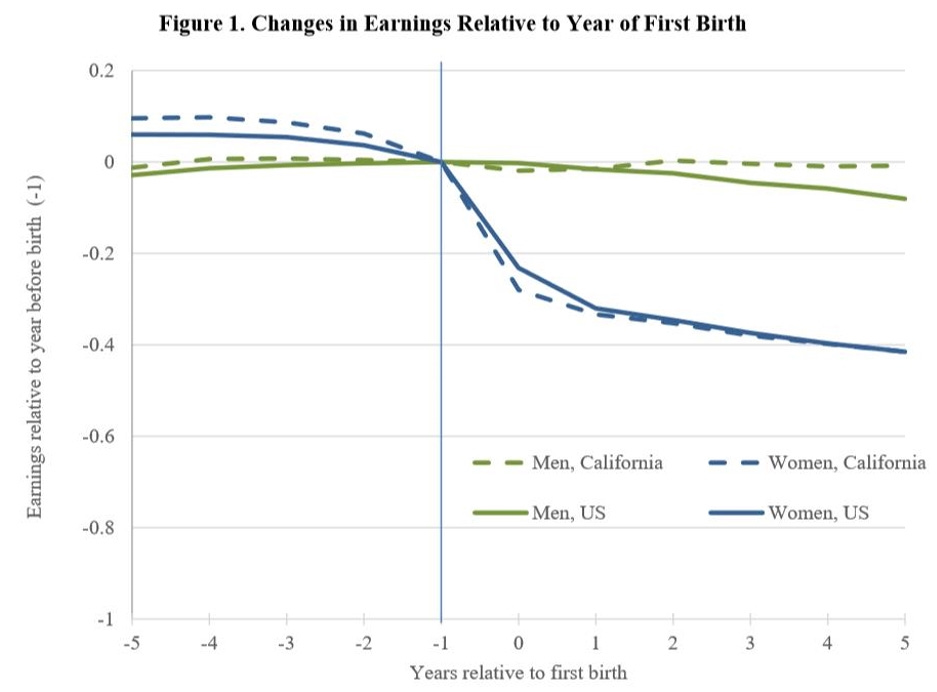In previous essays, I examined how Americans today are having fewer babies than at any time since records have been kept. Why is that?
It doesn’t seem to be a matter of an unfair distribution of labor in the household once kids arrive. The large majority of married parents with young children share hours of housework, childcare, and paid work equally and are satisfied with the fairness and overall quality of their marriage relationships.
Still, women are having fewer children than they say they would prefer to have.
According to her biographer, the first female Cabinet Secretary and the chief architect of FDR’s New Deal legislation, Frances Perkins, felt this about the importance of motherhood:
Despite her feminism, Frances viewed motherhood as a full-time occupation. She planned to retreat from the workforce but stay involved in charity work, as suited her schedule. In articles she wrote throughout her career, she described caring for children as all consuming. She urged women to seek work outside the home only if their salaries covered their expenses and if they could afford excellent child care. She noted that paid employees seldom performed child care as lovingly as a mother.
Women today would seem to agree. Large majorities of working women say they would prefer to be able to stay home and raise children. Back in 2012, as reported in ForbesWoman, a media site for women in business:
For the third year running, ForbesWoman and TheBump.com surveyed 1,000 U.S. women in our joint communities (67% were working outside the home and 33% stayed at home with their children) about their employment decisions post-motherhood, and how their family finances and the economy affected those choices. You can find survey highlights here. At a moment in history when the American conversation seems to be obsessed with bringing attention to women in the workplace (check out “The End of Men,” or Google “gender paygap” for a primer), it seems a remarkable chasm between what we’d like to see (more women in the corporate ranks) and what we’d like for ourselves (getting out of Dodge). But it’s true: according to our survey, 84% of working women told ForbesWoman and TheBump that staying home to raise children is a financial luxury they aspire to.
ForbesWoman seems to have stopped running that survey after 2012, perhaps because it was odd for a site dedicated to women in the workforce to be highlighting the preference of a large majority of women in business to stay home with kids.
Anyway, while 67 percent of mothers with children say their ideal situation, all things considered, is to stay at home or only work part-time, in reality most working mothers are working full time due to economic circumstances. Over a decade ago, Pew Research found that “While a plurality of today’s mothers (47%) say their ideal situation would be to work part time, in reality most working mothers are employed full time.”
When asked by the Gallup poll why people aren’t having more children, 65 percent said it was because they didn’t have enough money or that raising children is too expensive. A 2018 New York Times survey found that among women who didn’t want children the top reasons given included not being able to afford childcare, not being able to afford a house, and worries about the economy.
As Brad Wilcox and Wendy Wang write:
[A] recent Institute for Family Studies/Wheatley Institute survey suggests the biggest factors [involved with women’s decision not to have children] are not careers or infertility. They are marriage- and money-related.
In looking at women aged 18-55 whose desired fertility is greater than the number of children they currently have, the survey found the top two reasons for not reaching their desired fertility are either the lack of a suitable spouse/partner or the inability to afford (more) children, with 36% of women in this group citing each of these reasons. For childless women in this group, the lack of a spouse or partner is especially important, with 55% citing it as the reason they haven’t had the children they had hoped to have. Taken together, this research suggests large numbers of young women today will not become mothers or will not have the children they wish to have. This is especially tragic for women who end up involuntarily childless. Even though motherhood gets a bad rap today — one writer in The New York Times said, for instance, that “Married heterosexual motherhood in America … is a game no one wins” — the empirical evidence tells us that mothers are typically happier, less lonely and report more meaningful lives than their childless peers. More than 80% of mothers aged 18-55 are happy with their lives today, compared to 68% of women without children. And women who are married with children are the happiest group of women, according to the most recent data from the 2022 General Social Survey. Moreover, mothers report markedly higher levels of meaning in their lives and less loneliness, compared to women without children.
But the benefits of motherhood seem to extend beyond happiness. Recent research suggests that children are associated with an increased lifespan for women. Compared with childless women, mothers who reach the age of 60 have a 1.5-year longer life expectancy than their childless peers. What’s more: The evidence suggests that mothers are also markedly less likely to commit suicide. One study found that women who had children had about 60% lower odds of committing suicide, compared to childless peers. Having kids, it would seem, gives women something extra to live for.
One small aspect of the cost of having children today is the cost of child-protective car seats. In a paper entitled “Car Seats as Contraception,” researchers at MIT and Boston University found that car-seat requirements delay and deter the arrival of third children, especially, because normal backseats won’t hold three car seats, so you can’t practically have a third child in America unless you buy a minivan. As Ross Douthat describes it, “The requirements save lives – fifty-seven child fatalities were prevented in 2017, the authors estimate. But they prevent far more children from coming into existence in the first place: there were eight thousand fewer births because of car-seat requirements in 2017, according to their calculations, and 145,000 fewer births since 1980.”
But in the bigger picture, as reported in Fatherly:
[I]t boils down to two big expenses driving the explosion in child-rearing costs. First, health care expenses continue to balloon in the United States. According to the USDA data, the price of out-of-pocket medical and dental services not covered by insurance and prescription drugs has more than doubled to around nine percent of a family’s budget, up from four percent in 1960, and accounts for between $1,180 and $1,300 a year per kid. In addition to the fact that health care, in general, is more expensive these days, the figure also takes into account the rise in childhood chronic illness and the growing number of kids who suffer from obesity, food allergies, asthma, and diabetes -- all of which are on the rise … [C]hildcare is what’s busting family budgets the most. In 1960, when most mothers stayed home to watch the kids, child care accounted for only two percent of a household’s income. By 1995, that number had grown to 9 percent or almost $9,870 per year. Over the last 20-plus years, however, thanks to the continued growth of two-income families, childcare & education -- which includes “day care tuition and supplies; babysitting; and elementary and high school tuition, books, and supplies” -- has overtaken transportation as the third highest expense at 16 percent of the budget, or around $38,040 over the course of a child’s life. Not surprisingly, child care expenditures are shaped by family income more so than other expenses, as wealthy families ante up for expensive daycares and schools ($86,820 for 17 years) while lower-income parents rely more on grandparents for childcare, spending only $21,240.
And what helps explain the high costs of childcare? Due to increased regulations on childcare facilities, a 2019 report found that the number of small family childcare providers (one person caring for children in his or her own home) declined by 35 percent from 2011 to 2017. The number of large family childcare providers (two or more people caring for children in their own home) declined by 8 percent, and the number of childcare centers by two percent.
Unsurprisingly, during this same time childcare licensing requirements increased dramatically. The Institute for Family Studies has shown that prices rise with regulations like “group sizes, child-to-staff ratios, required annual training hours, and minimum educational requirements for teachers and center directors.”
Pending federal legislation this Congress (called the “Build Back Better” Act) that would federally fund more childcare, but with many more federal regulatory strings attached, would only make the situation worse. As Max Eden writes:
Traditionally, the federal government has funded child care through the Child Care Development Block Grant. This nearly $10 billion program has received substantial bipartisan support because it funds students, not systems, by providing parents with child care certificates. These certificates don’t count as formal federal grants, which would subject child care centers to a slew of regulations. They effectively put cash in parents’ pockets, providing the financial basis for a robust and diverse array of trusted child care providers. But Build Back Better’s $225 billion child care plan defines federal financial aid as formal grants. This means that faith-based child care providers will be required to navigate the Americans with Disabilities Act (ADA), Title VI and Title IX of the Civil Rights Act, Section 504 of the Rehabilitation Act, the Age Discrimination Act and the Head Start program’s myriad non-discrimination regulations. Child care centers newly subjected to the ADA will be pressured to undergo costly physical renovations. Secular child care centers may tap into federal facilities funding, but church-based providers may not. The law specifies, with seeming antagonism, that providers “may not use federal funds for buildings or facilities that are primarily used for sectarian instruction or religious worship.” It is unclear at best whether this hostility to religious institutions is constitutional, but such is the current state of the law nonetheless … The only institutions with the bureaucratic and legal capacity to readily comply with the slew of federal regulations are the ones that are already doing so: traditional public schools. Build Back Better will destroy church-based child care and swell public school enrollment, which in turn will expand the membership and power of the Democrats’ most powerful special interest group: teachers’ unions. And that’s probably the point …
It also may be that women are beginning to recognize the downside of childcare. The largest study done to date on parental leave policies (based on policies in effect in California) found that new mothers who took it ended up working less and earning less a decade later. The researchers concluded that something about taking paid leave seems to have encouraged mothers to scale back at work and spend more time with their children.
The chances of a child’s developing aggressive behavior increase as the hours spent by a child in daycare increases. Evidence also shows that the stress experienced by very young children when separated from their parents, if experienced over longer periods of time, can lead to negative results. As described by Katharine Stevens:
By age four-and-a-half, children who had spent more than 30 hours per week in child care had, on average, worse outcomes in every area of social-emotional development—weaker social competence, more behavior problems, and greater conflict with adults—at rates three times higher than their peers. Just 2% of children who averaged less than 10 hours per week exhibited behavioral problems, compared to 18% of those who averaged 30 hours or more and 24% of those who averaged 45 hours or more per week. The negative effects associated with extensive hours in child care rivaled the effects of poverty. Family income, maternal education, child care quality, and quality of the child’s relationship with the caregiver had no impact on those effects (see figure below).
The number of hours spent in child care continued to predict negative social-emotional outcomes into the third and sixth grades: at both points, children who had experienced at least 30 hours per week of non-parental care were rated by teachers as having worse social skills and poorer work habits. Children who had spent more time in center-based—rather than home-based—child care had the highest rates of behavior problems and conflict with teachers. By age 15, the link between hours in child care and problem behaviors was still nearly the same as it had been at age four-and-a-half: adolescents from both high- and low socioeconomic backgrounds who had spent more than 30 hours per week in any type of paid care before age four-and-a-half had higher average rates of risk-taking behaviors such as alcohol, tobacco, and drug use, stealing or harming property, and participating in unsafe activities.
What might have caused these effects? A fairly new body of research comparing children’s stress levels in child care and at home sheds new light on that question. Researchers assess children’s stress levels in both environments by measuring salivary levels of the stress hormone cortisol, produced by the hypothalamus-pituitary-adrenal (HPA) system in response to psychological or physical stress. A growing number of studies (see here and here) have found that some children’s stress levels increase significantly when they are in child care—especially full-time, center-based care—indicated by persistently elevated cortisol levels when in the child care setting, specifically. When at home, their cortisol levels return to normal … [P]ersistently elevated stress during early childhood has been established as a risk factor for adverse developmental outcomes, including disruptive behavior ...
A surge of findings from neurobiological research has shown that the ongoing, nurturing interactions occurring within young children’s one-on-one relationships with their parents or other primary caregiver literally shape the rapidly growing brain, with powerful, enduring effects on all domains of development. Yet universal child care increases parental workforce participation by decreasing parenting—which is incompatible both with what parents want and what evidence tells us is generally best for young children.
In a future series of essays, beyond the fertility rate, I’ll look at what’s happening with the U.S. labor force right now, to see whether today’s able-bodied adults in their prime working age are taking jobs at the same rates they used to, and if not, why not.
Links to all essays in this series: Part 1; Part 2; Part 3; Part 4; Part 5









